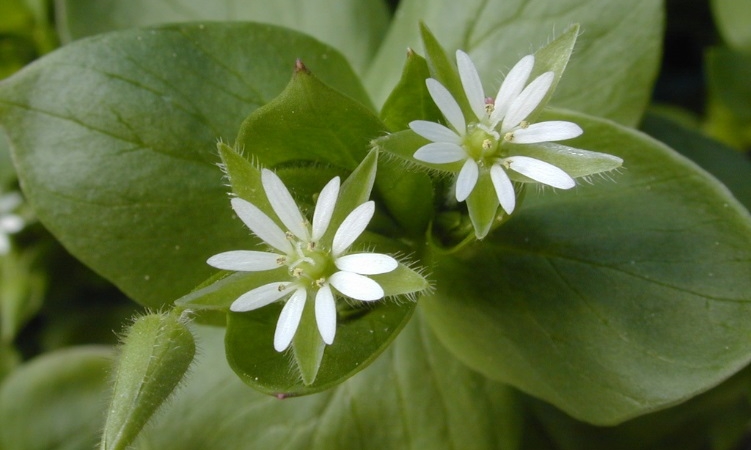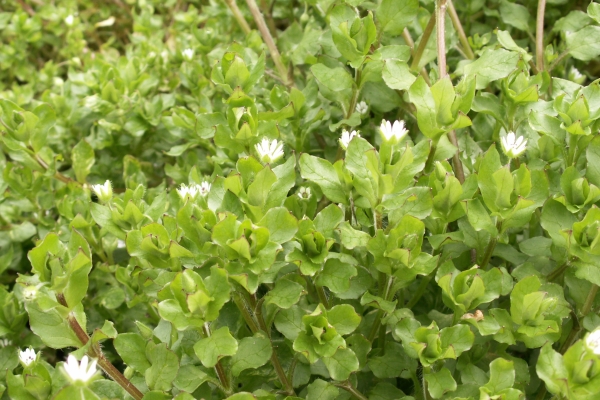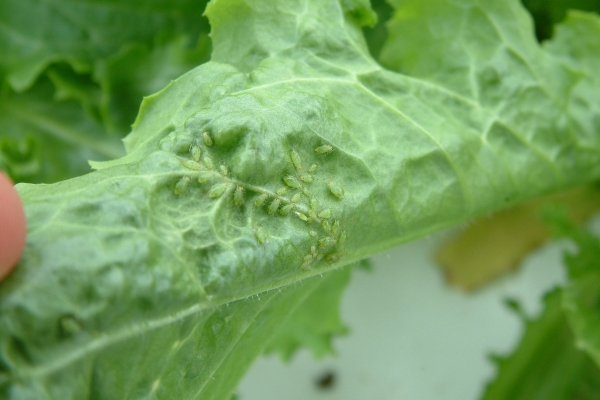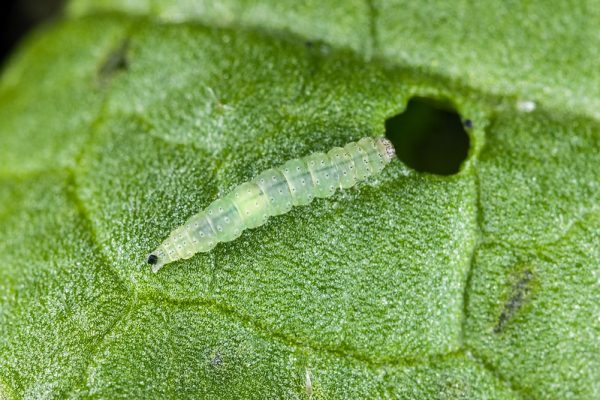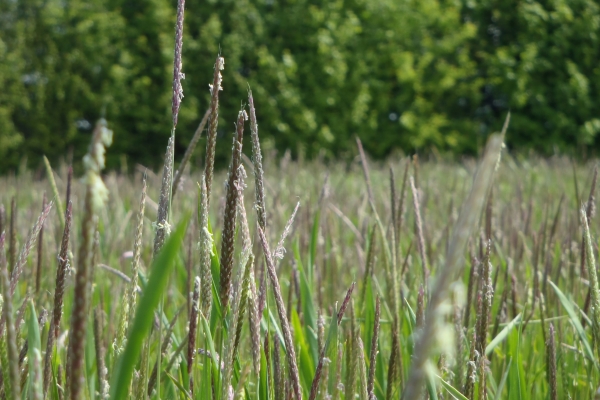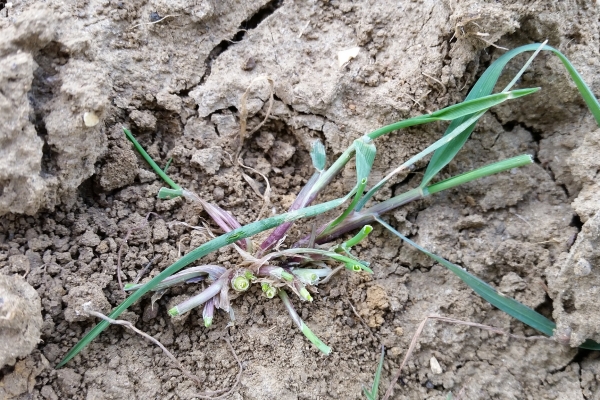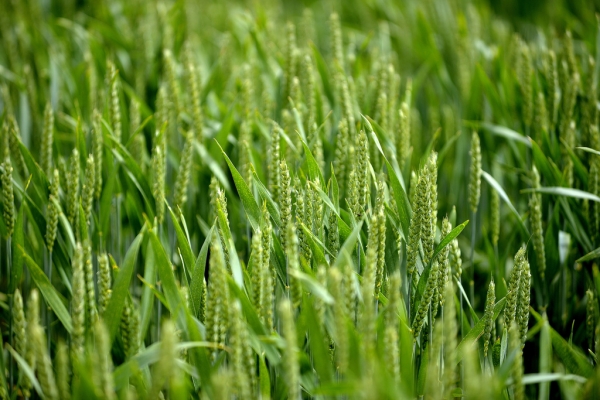What lurks below?
Walking through a maturing cereal field in late spring / early summer is an excellent time to assess how successful (or not) your weed management strategy has been in that season. This may be the correct time for assessing some of the most troublesome weed species that UK farmers have to control like black-grass and cleavers. But what about those weed species that never make it out above the crop canopy, that prefer to hug the ground, stay out of site and complete their life cycle way before the crop matures?
There is a whole raft of species that fit into this category, but the most widespread and prevalent on UK farmland is chickweed (Stellaria media). In this blog I will look at two key aspects of its agroecology, to see if there are any chinks in its life cycle that can be exploited to achieve better control in the long term. This has been attained for other weed species like black-grass, where a good knowledge of what happens at key life cycle stages can be used against it, can we do the same for chickweed?
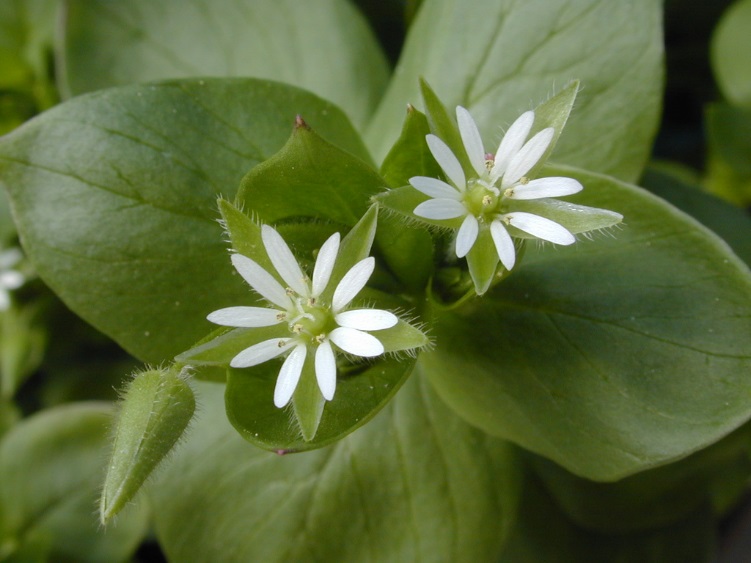
Stellaria media
Let’s start with its germination pattern and the possibility of altering drilling dates that fall outside that peak period. This works for black-grass because most of the germination occurs in the early autumn, allowing for these plants to be sprayed off before a delayed autumn or spring crop is planted. For chickweed, the germination period is much more protracted and there are two distinctive peak germination periods in the autumn and spring. Therefore, delayed drilling can play a role because it’s always easier to control plants prior to a crop going in the ground than after, but to a lesser extent than with other weed species.
The second area where we have exploited the life cycle of certain weeds to gain better control, is knowing about the persistence of seed in the soil. Is the old wives’ tale of one years seeding, seven years weeding correct? As a general rule, grassweeds have a much shorter persistence than broad-leaved weeds. Chickweed has an annual decline rate of about 30%, with 1-2% of seed surviving up to 10 years. In chickweeds case, the old wives’ tale is pretty much spot on. One of the first experiments I worked on at Rothamsted was looking at the seed persistence of a range of weed species, including chickweed. This involved taking soil cores from a range of plots at our Woburn farm that had been sown with our species the year before. These soil samples where then brought back to the lab, washed out, seeds identified and repeated in the following years.
With these figures in mind is there anything that can be done with cultivations? Very lightly cultivating stubbles to bring old seed to the surface will aid germination as old seed needs light to germinate, this also leaves fresh seed at or near the surface to be predated by birds and insects. Ploughing could work to bury new seed, but with the proviso that you need to make sure you are burying more than you are bringing up. Due to the long persistence in the soil, it would then be a long time before you could use the plough again as a reset button.
Therefore, in answer to my question can we exploit aspects of the chickweed life cycle, I think the answer is that it is much more challenging with chickweed and broad-leaved weed than for grass-weeds. Farmers who use herbicides for control in crop have a good range of actives from a wide range of modes of action that are achieving very good reliable control. For growers that don’t, in crop control is limited to inter row mechanical weeding, which has improved massively with the introduction of GPS guidance systems, reducing crop damage, but soil conditions need to be ideal.
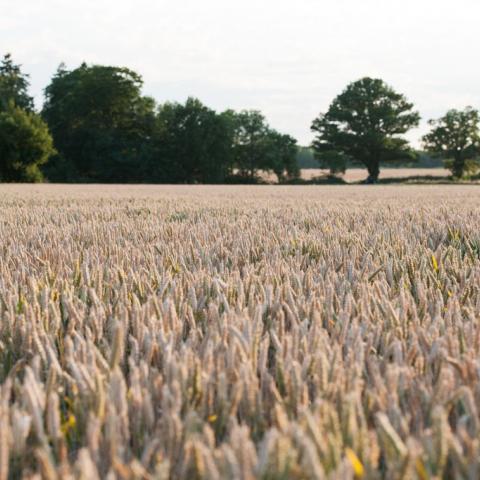
Is this crop as clean as it appears?
Should we be worried about these weeds that lurk below the canopy, live long in the soil and have a lack of cultural control options? Most of these species like chickweed are not particularly competitive and have wider benefits for the environment, such as being a valuable source of food and shelter for farmland birds and invertebrates. Should we tolerate low level populations of these weeds for the greater good? Next time you walk through what you think is a clean crop, look below the canopy and have a rummage around, you might be surprised at what is lurking down there.
Richard writes of himself:
“I have worked within the Weed Ecology & Evolution Group or in its various iterations for the last 18 years. I joined almost straight out of university where I studied geology, which rocked!! I got inspired to work with weeds because I could see a direct link between the science the group was carrying out and relating this information to end users, this is something that I am still passionate about today. My current position is as a weed science specialist, working on the more applied aspects of the projects that are funded within the group, including the BGRI (Black-grass Resistance Initiative), a new institute project called Smart Crop Protection and an EU project IWMPraise. I am a keen cyclist and love to ride round the countryside and quite often have to stop to see what is going on in some of the fields that I pass, to be nosy that is, not to take a break.”
Want to keep up to date on activities at Rothamsted Research? Follow them on X
Photo credits: Rothamsted Research
